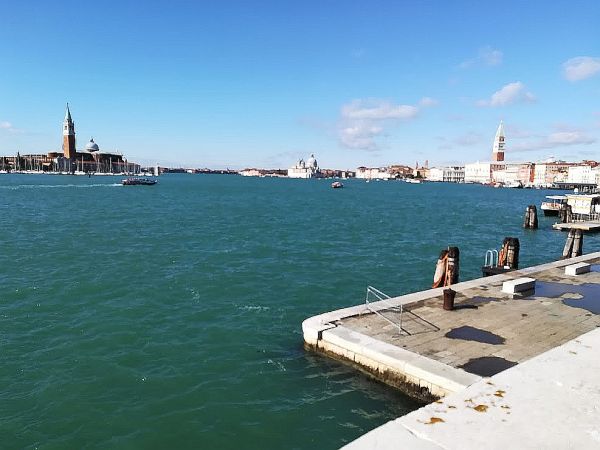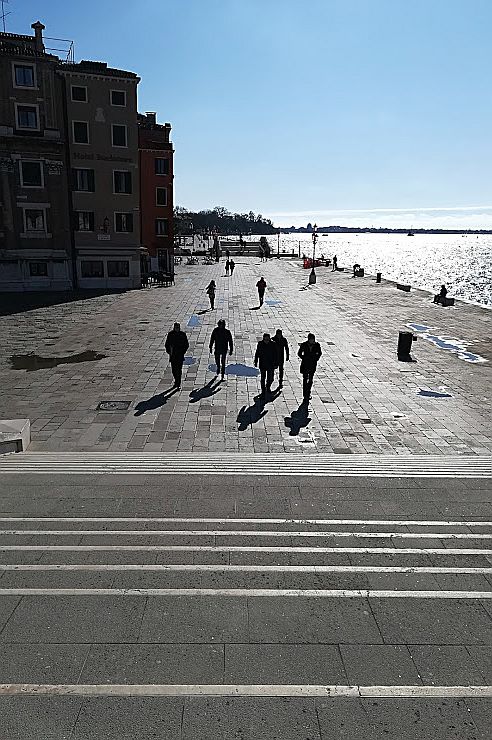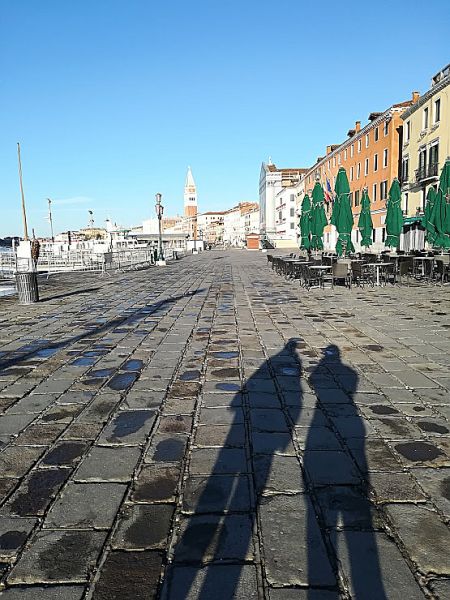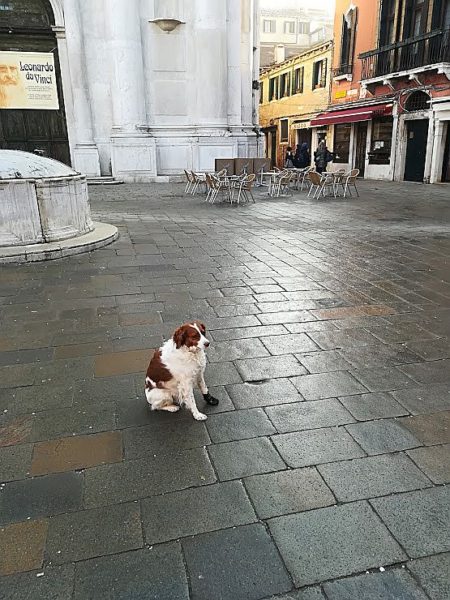
I would bet you money that every single person who has come to Venice in the past 200 years has said: “It looks like a stage set.” I’ve heard lots of people say it, as if it were an astonishing discovery. I heard myself say it, on my first trip here. I thought I’d said something original.
But empty stages, I’m here to tell you, aren’t interesting at all.
Walking to the Rialto Market yesterday morning was not a very pleasant experience. There were some people outside, here and there, but a promenade that I once would have savored as a delicious interlude of stolen calm was a wander across a disconcerting dreamscape; despite the gleaming March sunshine, it felt like we were walking through one of those vaguely ominous black and white Eastern European films from the Sixties.


Suddenly we saw a young couple having breakfast in the screened-in porch of the Pensione Wildner on the Riva degli Schiavoni – Honey look! Tourists! They were the only ones in the entire room, and I can’t say how I resisted taking their picture. Maybe I was afraid of scaring them away, like a barely glimpsed Javan rhino in the wild. (But if they’re in Venice these days, it’s probably impossible to scare them.) We passed a friend, a professional photographer, who was going toward San Marco, and I almost yelled “Tourists! On the Riva Schiavoni! Two of them!” as if he’d want to snap their picture for the Gazzettino before they escaped. This is not good at all.
Fun facts from the Gazzettino:
A review of 21 communes in the Veneto at the highest risk of hardship from the disappearance of tourists puts Venice at #16 (NOT #1), right after Livinallongo del Col di Lana (mountains) and right before Eraclea (beaches). The top six are all around Lake Garda, which depends a great deal on German tourists.
Speaking of Germany, the epidemic started there, it’s just been stated, and not Italy (so we can throw away our leper bells?). Just telling you for the record.
Vaporetto ridership is down 40 per cent. Actually, this is delightful for those who are still riding, but don’t say that to the ACTV officials who are beginning to consider cutting back on service. Yesterday morning we were on the #1 coming back from the Rialto and there were 13 people aboard, including us. Two (not one, but two) ticket inspectors got on, and went down the aisle, as required, checking if everybody had a valid ticket. It seemed just a little extreme; I’d say we’re scraping the bottom of the barrel here, if the fine on one freeloader is going to keep the ACTV afloat.
In point of fact, a large part of the mountains of money from the vaporetto tickets are spent on the land buses; lack of tourists paying 7.50 euros per ride means that red ink will soon be leaking onto the accounting pages. The books are already a little bloodstained by the cost of the damage from the acqua granda of November 12: There are 9 vaporettos and 22 docks needing more or less major repair or reconstruction, (20,000,000 euros).
Also, every night 95 vaporettos, 300 buses and 15 trams are disinfected. That’s not free, of course — what is? Not that I have sympathy to spare for the ACTV, but I’ve only ever noticed the problem of too few vaporettos for too many passengers. It’s a surprise to find myself thinking, even briefly, about too many vehicles and not enough riders.
Stage-managing this city has always been a challenge. But now we not only have no audience, but hardly any actors, either. This is some spectacle.

